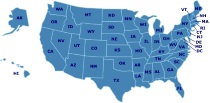Homeschooling Students with Different Learning Styles
You probably already know that people learn in different ways. Find out more about these learning styles to help you as you begin homeschooling. The theory of multiple intelligences, along with learning styles such as visual, auditory, reading/writing, and kinesthetic are discussed, with strategies for integrating approaches into your curriculum choices and planning.
Understanding Your Child's Learning Style
Homeschooling Students With Different Learning Styles (Visual, Read/Write, Auditory and Kinesthetic)
Do you know how your child learns best? If you're not sure, this guide can help you figure it out. Because people learn in different ways, with diverse ways of capturing information and processing knowledge, you'll be more successful in your homeschooling if you can understand these particular learning styles for your children. Responding to your children's learning styles will help both them and you become more effective and enthusiastic about learning in your home. This guide helps you understand visual learning styles, auditory learning styles, reading/writing learning styles, kinesthetic learning styles, and offers information and tips to get the most out of your understanding of your own child.
Raising Topsy-Turvy Kids: Successfully Parenting Your Visual-Spatial Child
Understanding how children learn best allows you to meet their needs and help them succeed. A visual-spatial learner remembers things in pictures and learns better with visual clues and strategies. This book addresses those needs and helps you figure out how to encourage this type of learner in your homeschool environment.
100 Top Picks For Homeschool Curriculum: Choosing The Right Curriculum And Approach For Your Child's Learning Style
Right-Brained Children in a Left-Brained World: Unlocking the Potential of Your ADD Child
Learning Styles and Hemispheric Dominance—Right or Left Brain: Which is Dominant in Your Family?
The Ultimate Guide to Learning Styles
Understanding your child's learning style is the key that can unlock your child's potential. Children retain more when they are taught and practice independent learning in cooperation with their particular learning style. You can also avoid a lot of frustration by responding to your child's learning style rather than fighting it. This guide explains seven different learning styles and will help with understanding your homeschooling style and curriculum choices for that specific model of learning. This will help your child learn more efficiently as well as reducing stress in your homeschool. The seven learning styles explored include: visual learners, auditory learners, reading/writing learners, kinesthetic learner, mathmatical/logical learner, social learner, and solitary learner.
Know Your Students: Identify Their Personal Learning Styles
Cognitive Styles and Learning Strategies: Understanding Style Differences in Learning and Behaviour
The Seven Learning Styles
In Their Own Way: Discovering and Encouraging Your Child's Multiple Intelligences
Learning Styles: Reaching Everyone God Gave You to Teach
How to Determine Your Child's Learning Style
Determining Your Child's Learning Style
Most students use a combination of learning styles, drawing from the four main types: visual, auditory, reading/writing, and kinesthetic. Responding with the right approach to your child's learning style can make all the difference when it comes to your child learning, understanding, and remembering educational material. With understanding of your child's learning style, you can more effectively choose materials and methods to emphasize his or her strengths rather than work against them.
Discover Your Child's Learning Style : Children Learn in Unique Ways - Here's the Key to Every Child's Learning Success
In Their Own Way: Discovering and Encouraging Your Child's Multiple Intelligences
The Way They Learn
How To Identify Children’s Learning Styles
An appreciation of your child's primary learning style will help you support them in learning at home. It is also important to understand your own learning style if that is different from your child's. First, identify your own learning style of one of the four primary types: visual learner, kinaesthetic learner, auditory learner, and logical learner.
The Learning Style Quiz
How do I know what my child's learning style is? This quick quiz can help you figure it out. There are lots of combinations of different learning styles and usually children are not just one single style. Everyone learns in a variety of ways. Understanding this can help you re-evaluate and adjust to your child's particular learning style. This quiz focuses on the three main learning styles: auditory, visual, and kinesthetic.
How to Determine Your Child's Learning Style
Children process information and learn in different ways. There are three primary ways in which people learn: visual, auditory, and kinesthetic. When you discover how your child learns, you can help shape their educational experience to prioritize this primary learning style, while also ensuring a well-rounded education.
Learning Styles: Reaching Everyone God Gave You to Teach
Discovering Your Child’s Learning Style
Everyone has their own preferred way of learning. Learning styles can be generally divided into three types: visual, auditory, and kinesthetic learning styles. Discovering your child's learning style will be of benefit to both your child and to you too. By understanding these learning styles, you can better choose curriculum and plan out a strategy that will work best for you and your child.
Quiz: What's Your Child's Learning Style?
Knowing and understanding your child's learning style is the key to homeschooling success. This short quiz will help you determine what ways of learning are best for your child.
Featured Resources
As an Amazon Associate, we earn from qualifying purchases. We get commissions for purchases made through links on this site.












